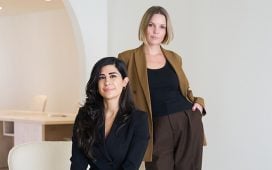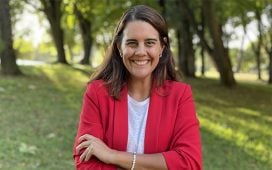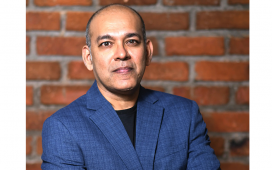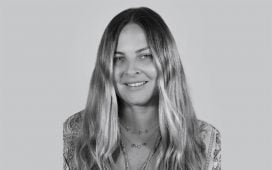By Gideon Spanier
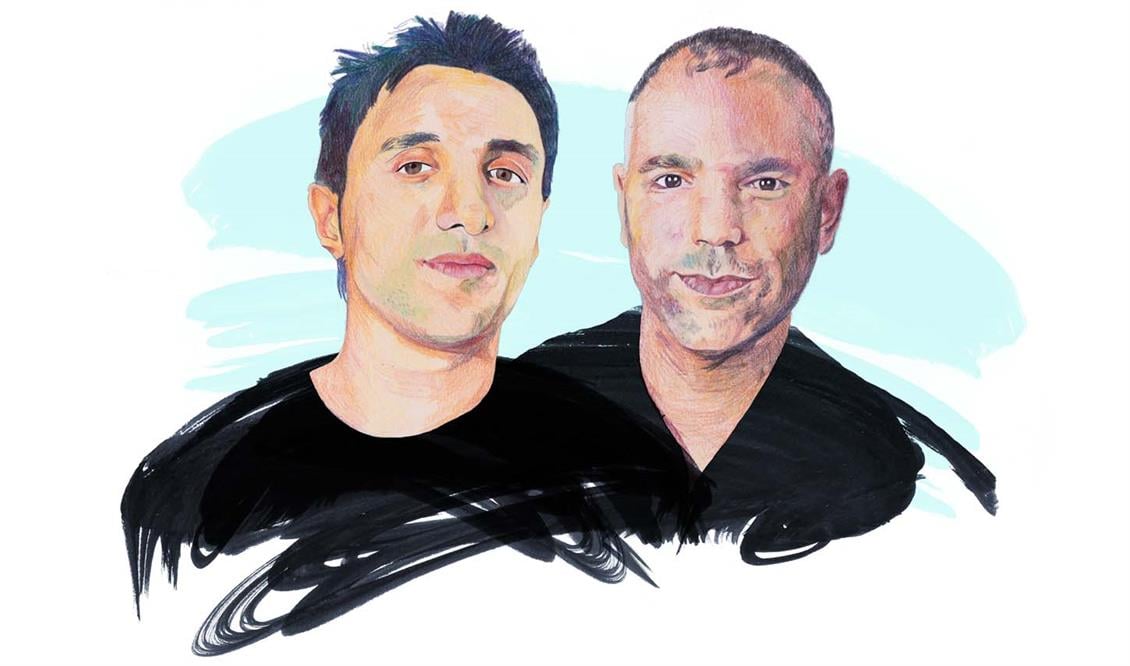
Volvo, one of AKQA and Grey’s most important shared clients, has backed WPP’s decision to merge the two agencies.
Andreas Malm, the global chief marketing officer and chief creative officer of Volvo Cars, says he believes the tie-up between Grey, a 103-year-old creative network, and AKQA, a younger, digital upstart, makes sense.
“Due to new technology and shifts in the advertising and marketing industry, the industry itself has become a little bit scattered. There is a huge need to pull data and creativity closer together,” Malm says.
“By doing this merger between AKQA and Grey, I do think they will become the ones to beat. I am biased, because I use these agencies, but I feel this merger is a natural step and it’s a direction that the rest of the industry needs to move in.”
Malm, a one-time senior partner at Swedish agency Forsman & Bodenfors, adds: “For too many years, maybe a decade, it has felt like the industry has been somewhat in a fight between data and creativity.
“If the industry embraces this shift, I believe that – sorry for sounding pretentious – we will embark on a new creative revolution. Creativity can be a super-power and data can be the compass to steer, guide and lead creativity towards the consumer.”
Malm’s vote of confidence comes at an important time because there has been some downbeat mood music around the merger, which will create a 6,000-strong agency group in 50 countries, with clients including GSK, Netflix, Nike and Procter & Gamble.
Mark Read, chief executive of WPP, announced the merger earlier than expected on 11 November, after Campaign heard about the plans and the company confirmed the news that it was creating AKQA Group.
Ajaz Ahmed, who co-founded AKQA in 1994, will be chief executive of the combined group. Michael Houston, global chief executive of Grey Group since 2017, will be president and chief operating officer of AKQA Group.
The rationale for the deal is to bring together Grey’s creative story-telling skills with AKQA’s digital and brand experience capabilities.
It will be called AKQA Group, even though Grey has about 3,800 staff and AKQA only 2,200, because Read said they wanted a “singular name”, rather than going through “linguistic machinations”.
However, soon after the merger announcement, Procter & Gamble, one of Grey’s biggest and oldest clients, expressed concern about WPP dropping the creative agency’s name in favour of AKQA.
Two days later, Read took the unusual step of going on the record to insist the Grey name will not be “retired” and would continue “for some time”.
Then, the following week, pranksters set up a parody “GreyKQA” website, which used the Dr Evil character from the Austin Powers movies to mock the decision to drop “one of advertising’s best” names “after 103 years” and blamed “consultants”.
And there have been rumbles of discontent from some people inside Grey and other parts of WPP about how the leaders from the two merged agencies should be doing a better job of communicating with staff about their plans and answering questions.
In a sign that the management team is keen to improve dialogue, Ahmed and Houston are expected to co-host the first in a series of live Q&A sessions with staff today (25 November).
Legacy creative agencies have been struggling
The sudden outbreak of sentimentality for the Grey brand is surprising, because the awkward truth is that, like many legacy creative agencies, it has been struggling for years.
Clients such as Volvo have been demanding greater integration of creative, technology and data capabilities long before the coronavirus pandemic.
Read’s decision to combine Grey (founded in 1917) and AKQA (set up in 1994) was first mooted two years ago, when the then new WPP CEO carried out two other big internal mergers that combined traditional creative networks with more digitally focused shops.
JWT (founded in 1864) merged with Wunderman to form Wunderman Thompson and Y&R (founded in 1923) joined VML to become VMLY&R.
WPP has said those mergers have gone well and claims they have been two of its best-performing creative agencies during this pandemic year.
There has been little word about Grey’s performance in recent quarters but AKQA was a relative outperformer, WPP has told investors.
Read, who inherited nine global creative agencies when he took over from Sir Martin Sorrell in September 2018, is under pressure to simplify the company’s operations further because of the Covid-19 downturn.
WPP’s revenues are forecast to drop between 8.5% and 10.7% in 2020 – the fourth consecutive year of declining sales.
“There’s no doubt that the pandemic should encourage us to take bolder and more ambitious decisions, and it’s a bold and ambitious decision to bring the two companies together and absolutely necessary,” Read said, speaking to Campaign alongside Ahmed and Houston on the day of the merger announcement.
It is necessary “to put to some extent legacy to one side”, he added. “You have to respect your heritage but you can’t be trapped by your heritage.”
WPP has also moved Geometry into VMLY&R to become VMLY&R Commerce in another internal agency merger this month.
A founder’s mentality
Ahmed has a founder’s passion for his agency, which is named after his initials.
“Our aspiration is to build the world’s pre-eminent creative agency,” he says of AKQA Group. “We really want it to be a catalyst for growth, for our people, for our clients, for the industry and, above all, for the work. We feel that, given both organisations’ belief in the power of creativity and the good that it can do, those shared values have really enabled this to happen.”
Ahmed is more of a deal-maker than might be apparent at first glance, having sold his company three times.
First, at the age of 27, he agreed a four-way merger with three other marketing companies – Citron Haligman Bedecarré and Magnet Interactive in the United States and The AdInc in Asia – to create AKQA Inc.
Ahmed became chairman of the board, which included two external investors, Accenture (now a big player in agency services itself) and Francisco Partners.
AKQA went on to sell a majority stake to General Atlantic, a private equity firm, in 2007, before selling again to WPP in 2012.
All of which means Ahmed brings significant experience when it comes to integrating businesses.
“I can’t think of a better person who I want to partner with to help bring out the best in our organisations on behalf of our people and our clients and the industry than Michael,” Ahmed says, referring to the Grey chief executive.
“Bringing us together really provides some exceptional opportunities for clients to creatively enhance their relationships and really capitalise on the opportunities made possible through experience and digital and story.”
Houston adds: “When we marry the historical success that Grey has had with story-telling and brand-building with AKQA’s undeniable leadership in innovation, technology and experience design, that combination answers the question that most of our clients are asking right now.
“Speaking frankly, from the Grey side, for years we’ve talked about some of the programmes and campaigns that we’ve created for clients and we’ve often lamented how they can be enhanced if we had greater technology capabilities and if we could take those brand designs that we have and move them into experience.
“With this new partnership, by uniting forces, we believe we’re now going to be able to do that much faster, much more efficiently, to the benefit of the work and our clients.”
Houston maintains that “Ajaz and I have long admired each other’s company’s work and portfolio and have encouraged our teams to collaborate over the years” but admits that there was resistance to a merger in the past.
“One of the positive things coming out of the pandemic is that it has demonstrated we can absolutely work in different ways and it has forced different kinds of collaboration that many times I think we were culturally resistant to [in the past],” he says.
“When we’ve started talking more recently about this, we’ve felt that culturally our organisations were more open and prepared and ready to collaborate than perhaps we were historically.”
Ahmed plays down suggestions that he must feel proud that he has turned AKQA Group into a 6,000-strong company that bears his name.
“I think it’s a massive mistake for me to feel proud about anything,” he says. “All of that credit goes to our team and our clients. There’s not a single accomplishment that we’ve ever made that isn’t a team effort.”
Grey’s problems
The Grey brand is something of a paradox. Named after the colour of the walls of its first office, Grey has what Nils Leonard, a former chief creative officer and chairman of the London agency, has described as “the shittiest name for an agency ever”.
The US group is not known primarily for its creativity – its slogan is “famously effective since 1917” – yet it prospered, and the business, which included MediaCom, sold to WPP for $1.5bn in 2004.
Grey went on to have a strong run from around 2007 to 2015 under Tor Myrhen, chief creative officer of the New York agency, who rose to be global creative chief, before quitting to join Apple.
Leonard was a leading player in Grey London at the same time, until he quit in 2016 along with fellow leaders Lucy Jameson and Natalie Graeme to start up their own agency, Uncommon Creative Studio.
The exodus of talent came just as clients were demanding more agility and digital know-how from their ad agencies, and Grey has had a tough time, despite the efforts of Houston and John Patroulis, global chief creative officer.
The London operation, in particular, has suffered from leadership upheavals and there have been ups and downs in some other markets.
Malm, who deals mainly with Patroulis and the New York office, says: “I haven’t seen those struggles – I’ve only seen excellence.”
For now, the Grey name will continue, rather than be dropped quickly. When AKQA previously acquired businesses such as Universal Design Studio, an architecture and interior design practice, and Map Project Office, an industrial design consultancy, it kept the names.
Asked how he felt about the potential end of the Grey brand, Houston was sanguine: “What’s important to me is the continuation of the type of work that we do for our clients and the focus on creativity. Grey has evolved many times over its 103-year history and this is the next wave of the evolution.”
Cultural fit
Read says the AKQA Group combination is not a takeover by AKQA of Grey but that has not convinced some staff who think the digital agency is in the ascendancy.
“Everyone is asking Grey people if they are OK. No-one is asking the AKQA people how they are,” one insider says.
At this stage, AKQA Group has made no appointments beyond Ahmed, Houston and Amy Oliver, the chief people officer, who comes from AKQA.
Observers say the choice of a chief financial officer will be a clue about the balance of power.
The two agencies are likely to look at shared office locations, technology platforms and back-office functions.
Read says carrying out a merger “is challenging in a pandemic – so we want to do it very carefully and very delicately”.
A WPP insider who is not involved in the merger adds: “Grey is a much more complicated beast than AKQA, which works with quite a tight group of trusted allies of Ajaz in not many locations.”
Malm, who recalls his own experience of agency life, is optimistic about the merger.
“Everyone who has been in a relationship knows that it will come with some friction but I am not sure that friction is a bad thing,” he says. “I actually think that friction is a good thing because to take this next step, we need to pass a couple of hurdles. That’s the beauty of working in a great industry is finding new paths forward.”
Still, Lucinda Peniston-Baines, co-founder and managing partner of The Observatory International, which manages pitches on behalf of clients, warns the hurdles could be significant.
“Like Wunderman Thompson and VML/Y&R before it, the AKQA/Grey merger makes strategic sense to answer clients’ longstanding complaints that creative agencies just aren’t digital enough and digital agencies just can’t do big brand work,” she says.
“However, like the mergers of its WPP siblings before it, the new AKQA/Grey combination may struggle to truly integrate and particularly to do so in a consistent way, globally so that they can deliver on that client promise worldwide.
“Potentially, it also makes it more challenging for WPP to position these three increasingly ‘blurred’ entities versus each other when clients are considering their options. WPP and these shops need to much more clearly define their points of distinctiveness if they’re to carve out a clear role in clients’ future agency models.”
A source close to WPP insists there are clear points of differentiation: AKQA Group blends creativity and technology, Wunderman Thompson combines creativity and data and VMLY&R fuses creativity and experiences.
The need for change and building the agency of the future
All of the big six agency groups know they need to change. Clients have been battling digital disruption and bringing some marketing services in-house and buying direct from Google, Facebook and other tech platforms.
“Given the excellence on the client side, what they want from agency partners is to develop ideas and execute those ideas at a quality that they can’t do themselves,” Ahmed says. “It’s about our imagination and our thinking taking quantum leaps outside of the echo chambers that might otherwise exist.”
He adds that “diversity of thinking and inclusivity and representation” are also vital.
It “allows us to re-imagine some urgent questions for our industry and to take a future-forward approach to those and answer them in hopefully the best way on behalf of our clients and society”, according to Ahmed, who adds that should attract and retain talent and help them build their careers.
The AKQA Group merger has received a surprising level of attention because it is part of the on-going saga about WPP and how it deals with Sorrell’s legacy.
WPP is the biggest of the global agency groups by staff numbers, with more than 100,000 employees, and has been one of the weakest performers since Sorrell’s final year in charge.
But there are signs that it has started to do better relative to some of its peers, notably Omnicom.
In the week of the AKQA Group merger, WPP’s stock market valuation briefly matched that of its US rival for the first time in two years, although Omnicom’s shares have edged ahead again since then.
The creation of AKQA Group is a gamble but the fusion of creative brand and digital experience capabilities is part of a trend that is being seen across the agency sector from start-ups to global giants.
Read points to “some interesting start-ups in London that we know that are taking a similar integrated approach”, referring to New Commercial Arts, which was founded by James Murphy and David Golding.
Meanwhile, Dentsu recently told investors it plans to move from 100 agency brands to just six global networks to offer more “integrated solutions to our clients”.
But if a client’s goal is complete integration, does the agency of the future need to include media capabilities too?
In the case of Volvo, it’s a pertinent question, given that the car brand uses WPP’s Mindshare as well as AKQA and Grey.
“That is still a question that needs to be answered,” Malm says, while offering a significant clue about what he thinks: “In the same way as data and creativity and technology needs to be put together, media needs to have an equally as tight relationship.”
Ultimately, Malm believes that creativity “hasn’t changed that much” over the years. “It’s the same thing: How do you fill a gap in consumers’ minds? How do you create engagement? How do you shift people’s perception when it comes to brands and products?” he says.
“From my perspective, the advertising and marketing industry has been a little bit lost in recent years because, instead of embracing each other, there’s been somewhat of a conflict between them. I do think the industry, in general, needs to change to be able to create change [for clients].”
Douglas Hayward, an analyst at IDC, a research firm, thinks the AKQA-Grey merger could help to bridge that divide although he warns of risks.
“AKQA clients that IDC have spoken to praised its capabilities in experience design, more than its capabilities in digital content creativity. Grey could play an important role in strengthening AKQA in that space,” he says.
AKQA’s consulting culture, “empathic and even humble approach” and its longstanding internal Framework, a code of values and ambitions for staff, could help to make the combination with Grey work, according to Hayward.
“The key, as with any merger will be in the execution,” he says. “A lot of mergers fail, but this one has some good things going for it.
Ahmed is thinking long term: “For more than 100 years, Grey has been synonymous with creative effectiveness, we want to build an agency that will withstand the next 100 years.”




